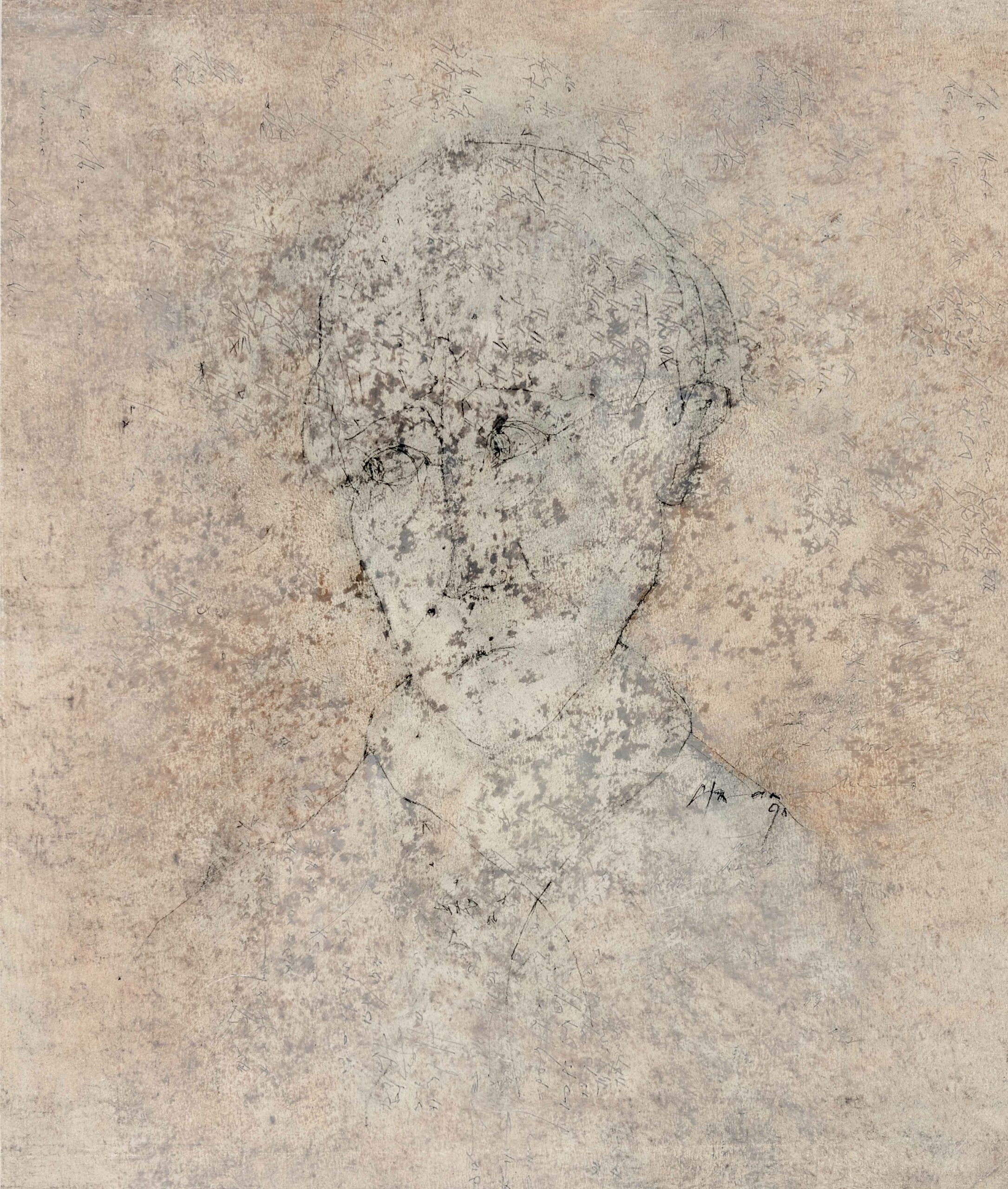edited by Luigi Fassi
“ Personnages ” is the first museum retrospective dedicated to the Franco-Palestinian artist Maliheh Afnan (Haifa, 1935 – London, 2016). A figure still little known to the art public, in five decades of intense activity Afnan has been a diasporic witness to the upheavals and destinies that have characterized the world of the Mediterranean Middle East.
The title of the exhibition takes inspiration from an evocative series of drawings, Personnages , created over the course of several years and executed by Afnan in mixed media, in which a succession of faces and human figures appear.
The representations within the works simulate a crowd of ghostly presences through which the artist returns fragments of his own experience in the troubled path of twentieth-century Middle Eastern events. Each work tells a face, a possible memory and a forgotten story, alluding to the uprooting from one’s culture and identity as not only a historical but also an existential dimension of human destiny.
The exhibition itinerary presented at MAN is characterized by a series of enigmatic works carried out by the artist on different types of supports and using different techniques including glazing, combustion and plaster reliefs.
Also on display are two works from the seventies, cartoons subjected to a combustion process that allude to the contemporary drama of the civil war in Lebanon, and an installation, constructed using ancient Bahá’í books, a religious cult founded by Baha’u’llah in the 19th century and the cultural bed of Afnan’s family.
The tour concludes with a showcase presenting a selection of sketch and small format drawings.
From these sketches emerges an aspect that runs subtly throughout the artist’s work, the perception of the tragic as indissoluble from the dimension of humor and irony.
Born in Palestine to Persian parents of Bahá’í religious tradition, Afnan spent a diasporic existence, from the Mediterranean shores of Palestine and Lebanon to the United States, from Kuwait to France and England.
It is precisely the historical and social events from the 1940s onwards in the Middle East that characterize the artist’s artistic career, witness to the traumatic events of those decades, such as the devastation of the civil war in Lebanon.
The entire project is accompanied by a monographic catalog published by Arkadia of Cagliari, with texts by Sussan Babaie (professor of the history of art of Iran and Islam at the Courtauld Institute of Art in London), Rose Issa (historian of Middle Eastern art, London) and Luigi Fassi.

